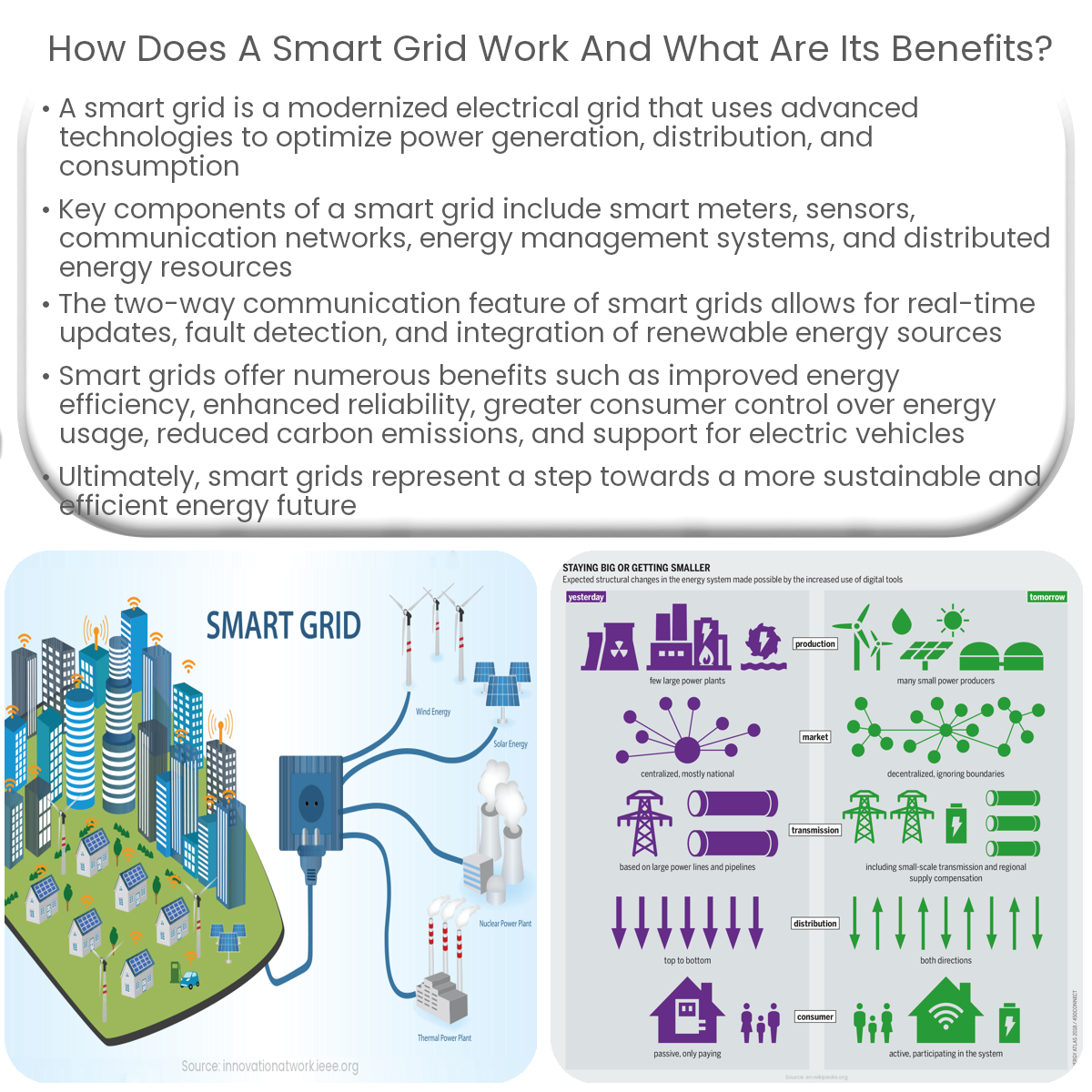A smart grid uses advanced technologies to optimize electricity generation, distribution, and consumption, improving efficiency, reliability, and sustainability.
How Does a Smart Grid Work?
A smart grid is a modernized electrical grid that leverages advanced technologies to enhance the efficiency, reliability, and sustainability of power generation, distribution, and consumption. This article explores the workings of a smart grid and highlights its benefits.
Smart Grid Components
Smart grids consist of interconnected components that work together to optimize the electrical grid:
- Smart meters: Collect and transmit energy usage data to utilities and consumers, enabling real-time monitoring and demand management.
- Sensors and monitoring equipment: Continuously monitor grid performance, detect issues, and provide real-time feedback for improved grid management.
- Communication networks: Facilitate data exchange between grid components, utilities, and consumers, enabling quick response to changing grid conditions.
- Energy management systems: Analyze data from various grid components and optimize grid performance based on real-time conditions.
- Distributed energy resources (DERs): Include renewable energy sources, energy storage devices, and demand response programs, contributing to grid flexibility and resilience.
Smart Grid Functioning
Smart grids use a combination of technologies to improve the traditional grid:
- Two-way communication: Real-time communication between utilities and consumers allows for better demand management and grid optimization.
- Advanced metering infrastructure (AMI): Smart meters provide detailed energy usage data, enabling precise monitoring and billing.
- Automated fault detection and isolation: Smart grids can quickly identify and isolate faults, reducing outage times and improving service reliability.
- Integration of renewable energy sources: Smart grids can seamlessly incorporate various renewable energy sources, diversifying the energy mix and reducing emissions.
- Demand response: Smart grids facilitate demand response programs that encourage consumers to reduce energy consumption during peak periods or shift usage to off-peak hours.
Benefits of a Smart Grid
Smart grids offer numerous advantages for utilities, consumers, and the environment:
- Improved energy efficiency: Smart grids help minimize losses, optimize energy usage, and reduce overall energy consumption, resulting in cost savings.
- Enhanced reliability: By rapidly detecting and resolving issues, smart grids can minimize power outages and improve service quality for consumers.
- Greater consumer control: Access to real-time energy usage data empowers consumers to make informed decisions about their energy consumption and potentially lower bills.
- Reduced greenhouse gas emissions: Integrating renewable energy sources and promoting energy efficiency, smart grids can significantly reduce carbon emissions and contribute to a cleaner environment.
- Support for electric vehicles (EVs): Smart grids can accommodate the growing number of EVs and their charging infrastructure, encouraging further adoption of cleaner transportation options.
Conclusion
Smart grids are revolutionizing the way electricity is generated, distributed, and consumed. By incorporating advanced technologies and promoting clean energy, smart grids can create a more sustainable, efficient, and reliable energy future.


